On departure morning, everyone at Wildflower Hall—Deborah and Paul Richard, and me—arose a bit nervous, hearts beating faster, with one of us (me) casting around for an escape route in the deep recesses of the mind.
I joked it felt like I was packing the car and being driven to college by my parents before the start of freshman year. Actually, it’s more like going to sleep-away camp for the first time, except that that didn’t bother me in the slightest.
It’s interesting how when you get old everything changes except your adolescent fears.
But before we leave, let me show you a little of Wildflower Hall.
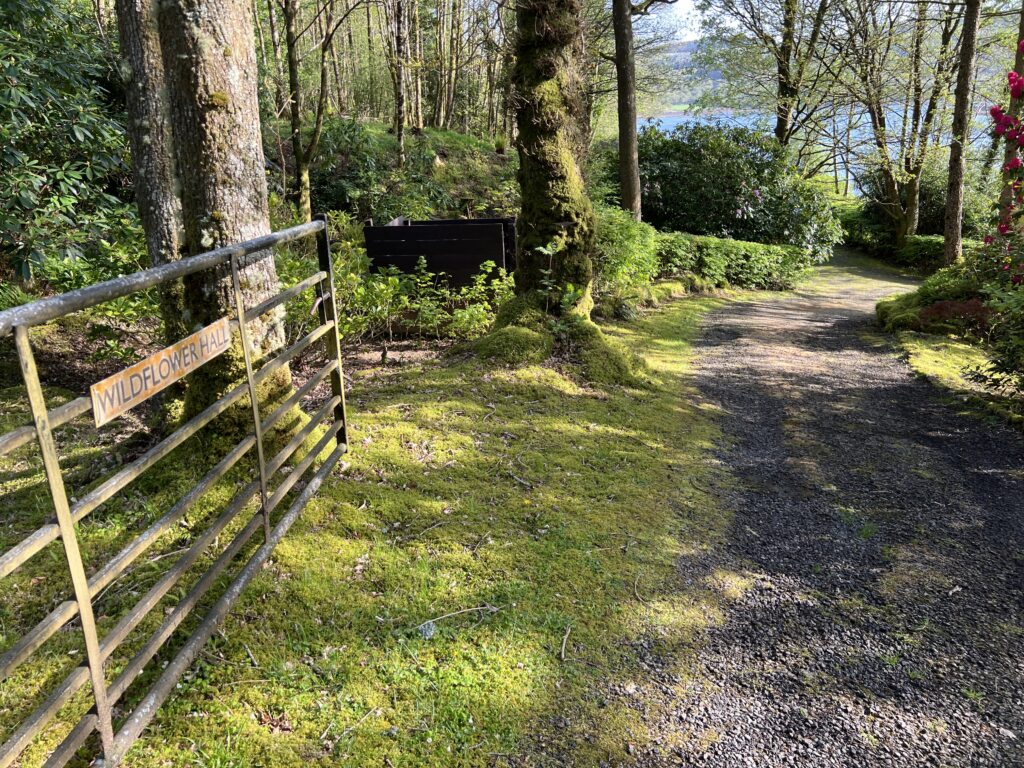
Deborah and Paul have owned it for 25 years. For most of that time they’ve split their time between her and Washington, about 1/3 and 2/3. Paul was the art critic for The Washington Post, Deborah an event planner whose events include the annual Kennedy Center Honors (which she still helps run).
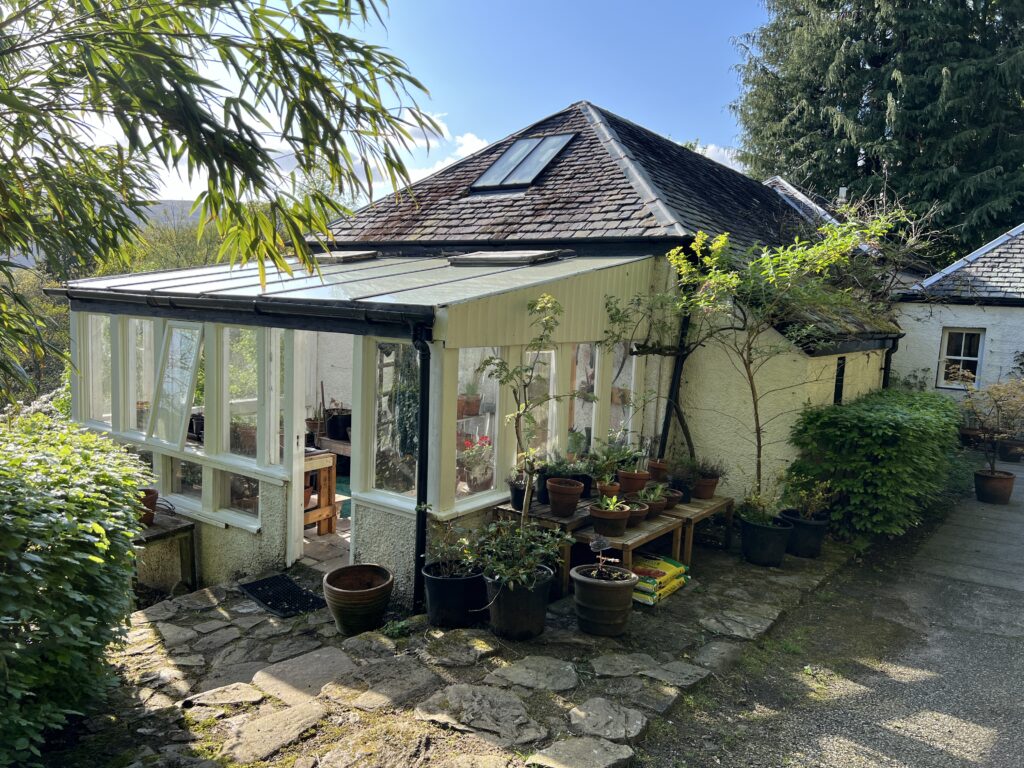
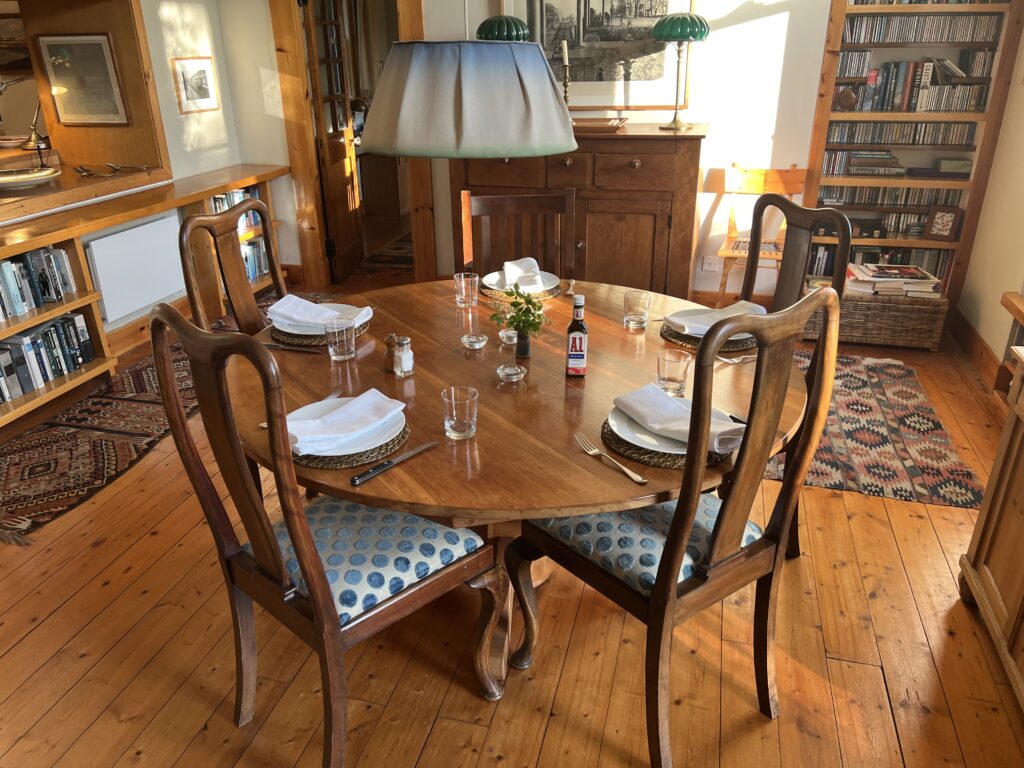

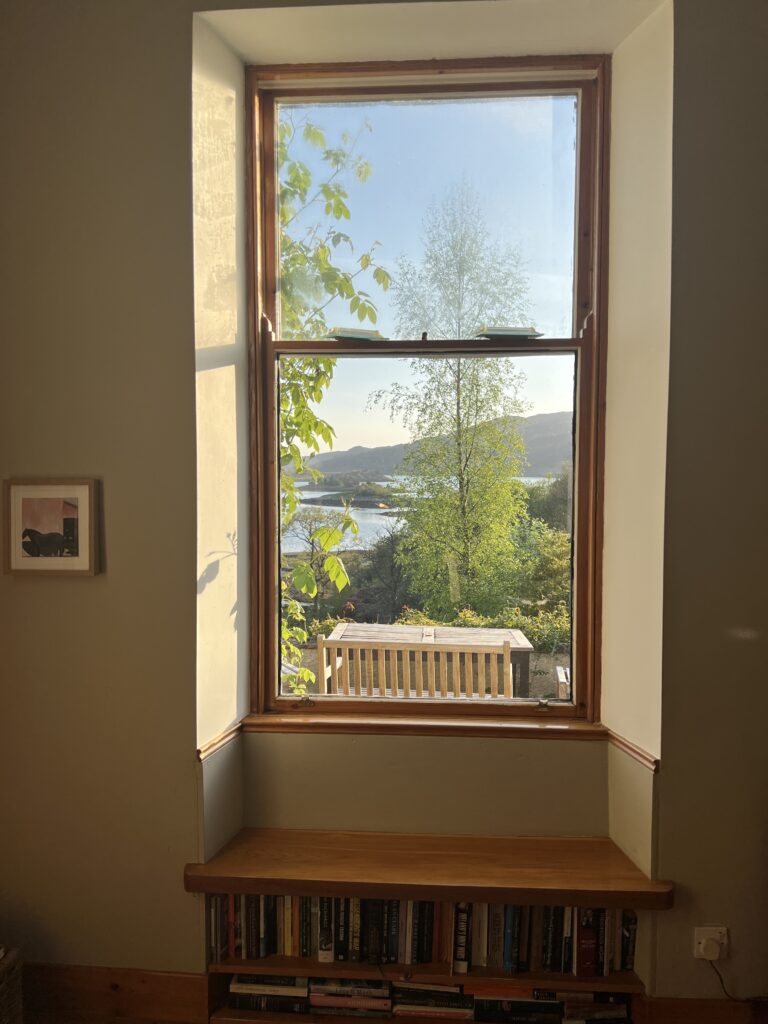
This is Paul. Deborah didn’t want her picture taken.
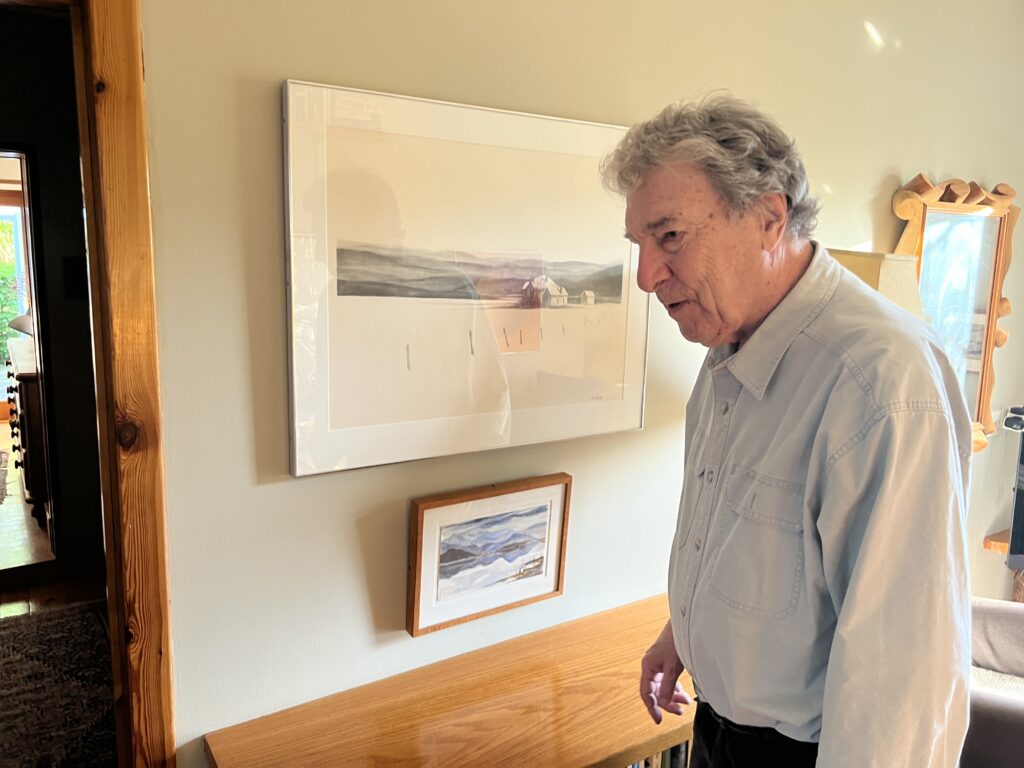
It’s a hundred-year-old house (added onto, of course) that sits on a hillside outside the village of Colintraive, in Argyll. It overlooks the Y-shaped meeting of two fingers of Atlantic water that reach many miles into the west coast of the country. This junction is called the “Kyles of Bute.”

Bute is an island just across the way. It’s fully inhabited—monks lived there when the Christian Era still had only three-digit dates—and now has three cheap and beautiful golf courses, several towns, a small population of Syrian refugee immigrants, and a restored castle tower, built in 1500, that just went on sale for $581,000.
One gets from Colintraive to Bute on one of the shorter car-ferry trips I’ve been on—seven minutes. It’s at the narrowest passage between the two pieces of land. Until late in the 1800s, cattle drovers would swim herds of cattle across the water at low tide on the first leg of a long walk to markets in Falkirk and Glasgow.
Colintraive has a “heritage center” in the village, about a mile from Wildflower Hall. Wall displays summarize the last thousand years, and old farming and fishing equipment fills an adjacent room. When I was there, a couple was exclaiming delight in finding forebears in the laminated copies of census records from the early 20th century.

There’s a community “poly tunnel” garden and a bowling pitch, with no action in either when I was there.

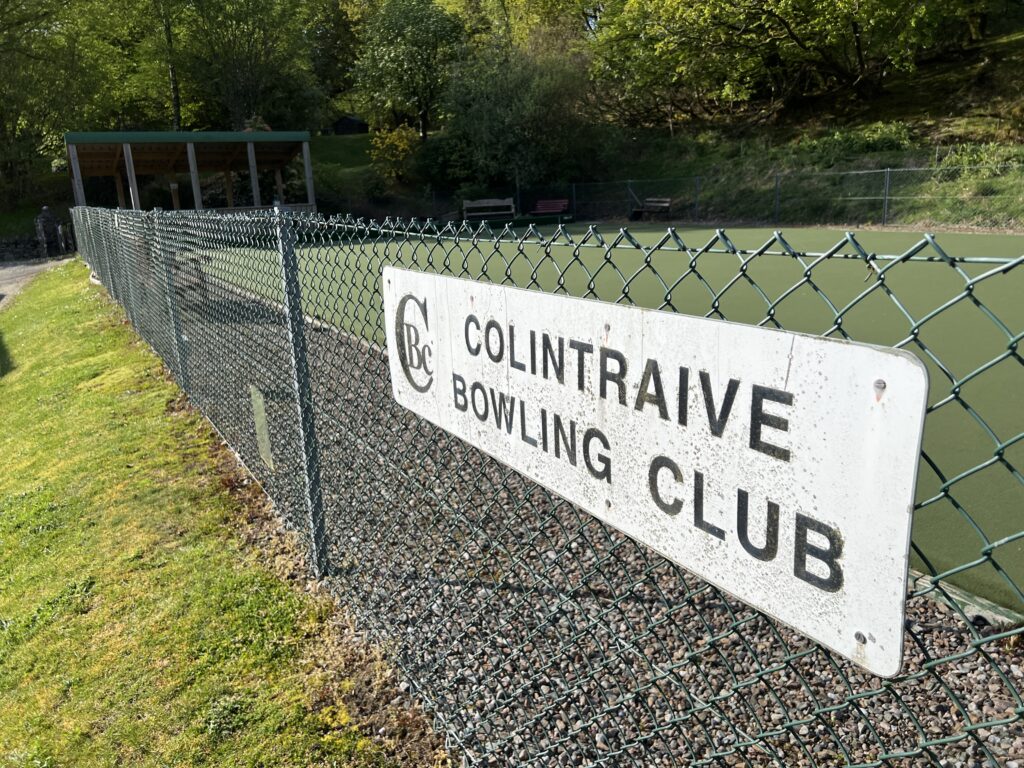
However, there were things to do on this visit other than check out the local attractions. Chief among them was stuffing my stores of freeze-dried food, gorp, and topographic maps into three padded envelopes and sending them to places I’d be passing through so I could restock. (Even without them I’m heavily laden.)
Deborah and Paul drove me an hour to a Scotrail station at Arochar & Tarbet, for a 9.38 a.m. train. It was not two hours late, it was not full to standing room, and it was not raining—all the case when I was here two years ago.
Four hours later the train pulled into Morar.

The one hotel is full and there was a party of 40 at dinner tonight, so I guess Morar isn’t the backwater it once was. Still, there can’t be more than 25 houses here.
It was low tide in an estuary that reached in from the Atlantic. It was time to run dogs and throw balls on the mudflats.

The mud, like the dry land, has lots of mountains.

I walked up a hill (on steps) close to the hotel. At the top, a Catholic parish had erected (and replaced at least twice) a large cross. It commemorated “a very successful mission” by the Redemptorist Fathers in 1889.
My interest, however, was getting a view of what I was in for.

The problem was that the GPS route on the navigation app on my phone didn’t look like what I was seeing. I won’t go into the details of the confusion, but it was considerable.
As noted in an earlier post, Morar is the hardest place to start from, with two days of trackless walking on the top of a craggy bench with steep sides. It’s potentially dangerous for a solo walker, which is why I’d like to talk to one of the seven other people scheduled to start here. However, none of them are staying in the hotel, the front desk man tells me.
If I don’t leave from here I’ll leave from Mallaig, five miles up the road, which is the starting point for about 60 people.
Either way, you won’t be hearing from me for at least four days. It’s three nights of “wild camping” (as they call it over here) before I get to electricity and the internet.
By then my decision will be old news. And I hope not “news.”
Wildflower Hall is lovely, and so are the photos on the way to the beginning of your wee walk. Thinking of you and hoping the wild camping isn’t too wild. Looking forward to the next dispatch.